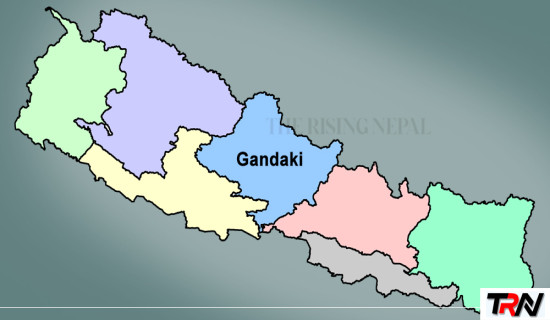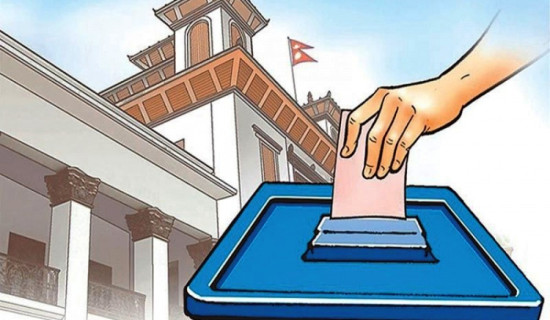- Thursday, 25 December 2025
Is Our Economy Still In Trouble?
We are connected with global economy, developmental patterns, and technology in this global interdependence. So, we cannot refrain from global socio- political and economic landscape. This has been so true since the advent of globalisation, privatisation and market economy that created wave in the beginning of the 21st century. The socio-economic impact of one region can automatically does have on the other. As recent alarming reports thrive indicating the global economy on constant shrink since the outbreak of the COVID-19, experts predicted, further devastating impacts were accelerated after Russian-Ukraine war. These events did have direct and indirect repercussions in several parts of the globe. Though some resilient efforts were taking place after the pandemic slowly subsided, the Russian-Ukraine war hit hard the process recuperating global economy, still further to shrink. Admittedly, we live far away from the war zones, but the setback gripped us, stifling our economic growth.
Apparently, the post-COVID world was full of precarious situations in terms of economic stagnation, for it had several economic, social, international impacts. That is, some of the adverse impacts seemed to be lasting longer than they were predicted. With some cautious plans and priorities, many countries tried to bolster hard hit economic restructuring, managing their spending on pubic goods and services, thereby generating environment for investment. However, some developing economies, like Nepal, could not pertain with changing ripples of economic waves that fell into the gorge of stagnancy.
Internal scenario
Since the post-COVID phase was taking stride, several economic engines like China, India, Germany and France were gaining economic resilience to impact positive environment for global economy. The economic shrink in trade, business, balance of payment, and other monetary implications in overall financial activities was still unfavorable. But in some countries, inflation, budget deficit, lack of spending capacity plagued desired economic gain. In nations like Nepal, the weakening capabilities in development activities have slackened the economic growth that was already at a snail's pace.
Imbalance of export and import chain, as a result of much more widening import figures in the recent years proved to be worrisome. Many developing worlds faced grave situations of tracking economic path as gradual dwindling of infrastructure development and lack of investment environment. That did have chain effect on several other sectors. Goods, services, and production sectors did witness somewhat negative scenario, bleaching economic environment. As a result, banking sectors underwent a situation of persistence shortfall in investment coupled by the reduced volumes of industrial and business activities. At the same time, the corporate sectors contributed less to the national economy, waiting positive intervention package on behalf of the government. Understanding this need, Nepal Rastra Bank curbed financial policy measures so as to stabilise derailed economic process.
Many financial experts voiced for rectification in economic priorities in critical times and tried to ask the government to pump in infrastructure. That was more exacerbated by the liquidity crunch. Consequently, the banking sectors faced massive failure of business and thus opted for merging as the policy initiated by the central bank, and several financial institutions and banks merged.
Investment for banking sectors turned out to be a Herculean task. The surmounting interest hike affected investment, thereby squeezing environment of economic activities. Even big investors tried to opt for easy solution to be able to pay bank loans. The easy thing would be, thus, an investment in share markets, but that too crashed as result of interest hike. In the country like Nepal, the private and public partnership is the pillars of economic generation and has played influential roles over the years. But the private sectors in this phase became inert economically.
There is another side to consider. Nepal's economic dream is always dependent on internal agricultural productivity and remittance that are foundations for economic mobility. The post-COVID phase in the nation emerged as resilient as before because there was not decrement in the flow of remittance. However, inflation did not go with the money coming to the country. Shocking it may sound, almost seventy per cent of remittance money coming to the nation went to non-productive sectors, mostly for consumption of goods and services. This bleak scenario backed up by lack of investment in productive sectors created a big gap in the demand and supply chain of economy. That created unprecedented situations never before in the economic history. Higher interest rate, lower spending on development projects, rising administrative costs incurred in the operationalisation of federal structure and conduction of election adversely impacted the overall economy. Moreover, the shrinking of loan flow from 26.4 percentage in the previous years to the staggering 3.8 per cent in the recent years indicated an unfavourable investment climate for the country.
Hopes
Alarming reports came by that Nepal did have only five months' import capacities and the government worked to reduce import of some goods in order backtrack ever rising spending on imports. Even former governors signaled about Nepal's economy to be failing gradually indicating that the country would face a situation like that of Sri Lanka. The other day one minister spoke out rather grave issue that there would not be sufficient money to bear administrative cost if situations would pave this way. And the government made head long efforts to curtail administrative costs and some allowances of employees were expunged from the salary and perks. Amid these bleak financial situations, there were still some hopes to reverse the gear of economy.
Since the implementation of a bit relaxing monetary policy by the Nepal Rastra Bank, and increasing remittance are expected to ease the situation thereby creating environment. At the same time, the government's recent decision to ease the selling of plots could help create a more congenial environment for investment. However, it is disheartening to see some dogmatic attitude of the investors still to be hesitant for any loan from the banks despite some call by credible banking sector.
(The author is an assistant professor at R.R. College.)
















